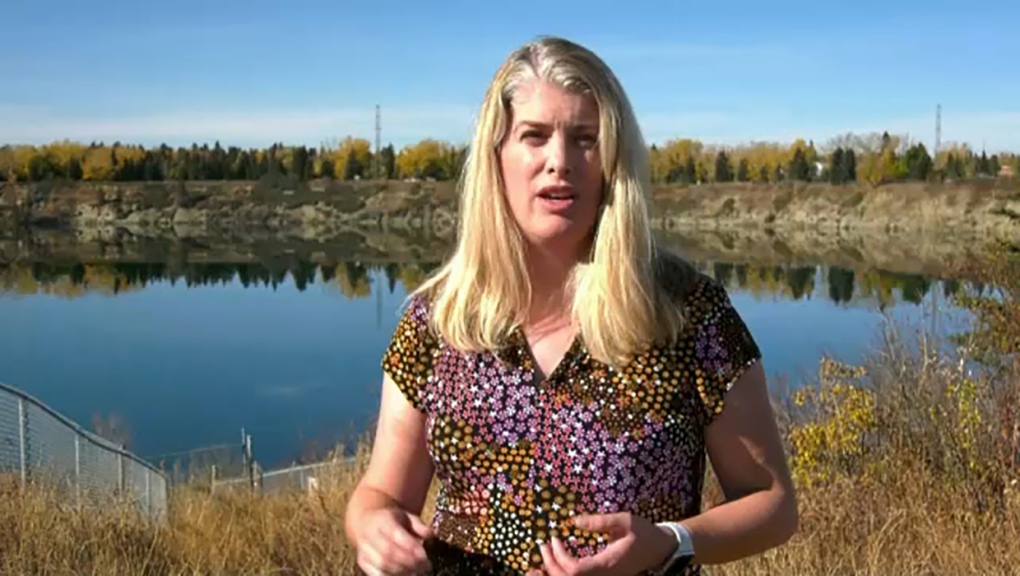Dry weather shifts Calgary's rivers into 'winter slow flow' sooner than expected
Calgary's recent long stretch of warm dry weather is having an effect on the Bow and Elbow rivers, but officials with the City of Calgary say the water supply is in good shape.
Downstream around Calgary it may not appear that water is scarce, even though river sources upstream in the mountains west of Calgary received less then half of expected summer precipitation.
Experts say that has caused a winter-level low flow and has also switched the river's source from mountain snowpack to groundwater -- and this has happened weeks earlier than typical.
"The current low flow is happening most likely because we had low precipitation in the mountains during the months of August and September," said Masaki Hayashi - geoscience professor University of Calgary
Alberta's situation is not as dire as in British Columbia, where coastal river systems are low and warm, harming the salmon run.
As for the shift in flow patterns in the Bow River Basin, Hayashi says they are likely a worrying trend not just in the fall, but he expects spring high flow may start earlier next spring.
"It will probably become earlier with climate warming. But there needs to be some sort of shift in water resource management to account for this," he said.
GLENMORE RESERVOIR
City officials say it prepares for shifting river levels by managing the city’s water supply at the Glenmore Reservoir.
"We look for a combination of low flows, low storage in our reservoir, high demands, and any operational issues. Those things can combine to challenge our water supply," said Pamela Duncan, team lead of resource strategy, water services.
 Pamela Duncan, City of Calgary
Pamela Duncan, City of Calgary
She says recent upgrades to the dam have increased storage capacity which is now full and says there's no threat to Calgary's water supply.
"We're constantly watching that and able to respond when we see any red flag that may challenge our supply," she said.
She added there are plans in the works to create a drought resilience strategy -- and to prepare direct response plans in case the river beds get too low.
CTVNews.ca Top Stories

Canadian team told Trump's tariffs unavoidable right now, but solutions on the table in surprise Mar-a-Lago meeting
During a surprise dinner at Mar-a-Lago, representatives of the federal government were told U.S. tariffs from the incoming Donald Trump administration cannot be avoided in the immediate term, two government sources tell CTV News.
Pedestrian killed by Via Rail train near Kingston, Ont.
Regular rail traffic has resumed with severe delays.
Muskoka reacts to major snowfall, hundreds stuck on Highway 11
From road closures, power outages, weather declarations and nonstop shovelling, Muskoka residents were faced with nearly a metre of persistent snowfall on Saturday.
Saskatoon priest accused of sexual assault says he meant to encourage young girl with hug and kiss
A Saskatoon priest accused of sexual assault says he meant to encourage and reassure a young girl when he hugged and kissed during his testimony at Saskatoon Provincial Court Friday.
Beef prices reach record highs in Canada
The cost of beef continues to rise, reaching record highs on grocery store shelves ahead of the busiest time for many grocers and butchers before the holiday season.
Trump threatens 100% tariff on the BRIC bloc of nations if they act to undermine U.S. dollar
U.S. president-elect Donald Trump on Saturday threatened 100 per cent tariffs against a bloc of nine nations if they act to undermine the U.S. dollar.
Bob Bryar, drummer for rock band My Chemical Romance, dead at 44
Bob Bryar, former drummer for the band My Chemical Romance, has died. He was reportedly 44.
Toronto man accused of posing as surgeon, giving four women injections
A 29-year-old Toronto man has been charged after allegedly posing as a surgeon and providing cosmetic procedures on several women.
'Disappointing': Toronto speed camera cut down less than 24 hours after being reinstalled
A Toronto speed camera notorious for issuing tens of thousands of tickets to drivers has been cut down again less than 24 hours after it was reinstalled.

































